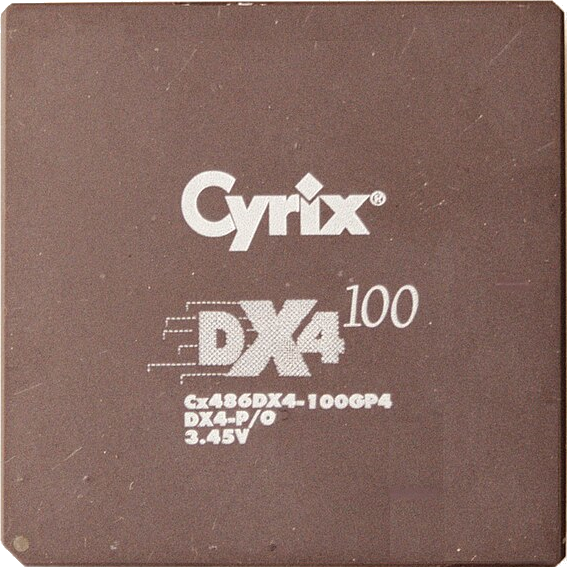I was for a while. Hosted a LOT of stuff on an i5-4690K overclocked to hell and back. It did its job great until I replaced it.
Now my servers don’t lag anymore.
EDIT: CPU usage was almost always at max. I was just redlining that thing for ~3 years. Cooling was a beefy Noctua air cooler so it stayed at ~60 C. An absolute power house.
4690k was solid! Mine is retired, though. Now I selfhost on ARM
I retired mine with a 12600K and I’m not sure what to do with it now.
your hardware ain’t shit until it’s a first gen core2duo in a random Dell office PC and 2gb of memory that you specifically only use just because it’s a cheaper way to get x86 when you can’t use your raspberry pi.
Also they lie most of the time and it may technically run fine on more memory, especially if it’s older when dimm capacities were a lot lower than they can be now. It just won’t be “supported”.
My home server runs on an old desktop PC, bought at a discounter. But as we have bought several identical ones, we have both parts to upgrade them (RAM!) as well as organ donors for everything else.
What hardware are you using where the cpu says you are limited to 4gb?
Even a 25 year old Pentium 4 supports 8GB.
Maybe an Atom?
Maybe. But it would need to be an Atom from 15 years ago. Anything newer does 32 GB.
Of course motherboards don’t support it but that’s not the cpu’s fault.
Yep. Intel atom D525
Have you looked into using zram?
My guess is an x86 32bit machine
Might be using a laptop where the RAM is soldered to the board. I’ve got a Thinkpad X280 that’s like that: no slots, just surface-mounted RAM.
That’s Lenovo’s fault, not Intel.
Intel atom D525
Oh wow, I just saw the comment about it being an ancient Atom. Yeah, fair enough!
Negative, Pentium 4 was x86 and thus could only address 32 bits.
64bit CPUs started hitting the mainstream in 2003, but 64bit Windows didn’t take off until Win7 in 2009. (XP had it, but no one bothered switching from 32b XP to 64b XP just to use more memory and have early adoption issues. Vista had it, but no one had Vista).
The Pentium 4 supported PAE and 36 bit PSE
https://en.m.wikipedia.org/wiki/Physical_Address_Extension
It’s kind of like how the 8086 was a 16 bit processor but could access 1 megabyte of ram (640k ram 384 k reserved for rom) . -Or the 286 which was 16 bit but could access 24 MB.
But even without that the Prescott P4’s supported 64 bits.
While technically true, the P4 did support PAE, in reality you couldn’t really make use of it on consumer hardware for most of its lifetime. No ordinary socket 478 mainboard with DDR1 memory supported more than 4 GB of RAM. With socket 775 more RAM was possible, but that socket is “only” ~20 years old.
Besides that, there were other even newer systems that supported only 4 GB of RAM, like some Intel Atom mainboards with a single DDR2 socket. Same with Via C3 mainboards.
Oh sure. But as I said, that’s the motherboard’s fault, not the cpu.
Then I don’t understand what your point is. A CPU on its own without a system isn’t of any use. Since there were no motherboards allowing you to use that much RAM, the point about the CPU supporting it is moot as far as I am concerned.
Because the meme blames Intel.
Imagine if I did a meme that blamed AMD for only supporting DDR4 because my motherboard only did DDR4 despite all AMD 7000 and newer supporting DDR4 or DDR5…
All of that was introduced in 2004. When you said “25 years ago” I assumed you meant the original P4 from 2000.
PAE was introduced with the Pentium Pro 30 years ago. I used it on Dell Pentium II servers that ran SQL Server. Even the 386 from 1985 could access 64 terabytes of ram using segmented mode.
Full 64 bit Prescott P4 was 2004.
8GB can be stuffy on certain programs
Aw yep, bought an old HP pro-lient something something with 2 old-ass intel xeons and 64GB ram for practically nothing. Thing’s been great. It’s a bit loud but runs anything I throw at it.
Just keep an eye on the power usage, depending on how expensive electricity is in your area. I live in California which has very expensive electricity, and buying newer, more power efficient hardware works out cheaper than 10+ year old Xeons over the long run, even if you get the Xeon system for free.
I run a local LLM on my gaming computer thats like a decade old now with an old 1070ti 8GB VRAM card. It does a good job running mistral small 22B at 3t/s which I think is pretty good. But any tech enthusiast into LLMs look at those numbers and probably wonder how I can stand such a slow token speed. I look at their multi card data center racks with 5x 4090s and wonder how the hell they can afford it.
Why didn’t you post this before I bought the RAM?!
My NAS is on an embedded Xeon that at this point is close to a decade old and one of my proxmox boxes is on an Intel 6500t. I’m not really running anything on any really low spec machines anymore, though earlyish in the pandemic I was running boinc with the Open Pandemics project on 4 raspberry pis.
The oldest hardware I’m still using is an Intel Core i5-6500 with 48GB of RAM running our Palworld server. I have an upgrade in the pipeline to help with the lag, because the CPU is constantly stressed, but it still will run game servers.
Me on a RPi4.
I’m still interested in Self-Hosting but I actually tried getting into self-hosting a year or so ago. I bought a s***** desktop computer from Walmart, and installed window server 2020 on it to try to practice on that.
Thought I could use it to put some bullet points on my resume, and maybe get into self hosting later with next cloud. I ended up not fully following through because I felt like I needed to first buy new editions of the server administration and network infrastructure textbooks I had learned from a decade prior, before I could continue with giving it an FQDN, setting it up as a primary DNS Server, or pointing it at one, and etc.
So it was only accessible on my LAN, because I was afraid of making it a remotely accessible server unless I knew I had good firewall rules, and had set up the primary DNS server correctly, and ultimately just never finished setting it up. The most ever accomplished was getting it working as a file server for personal storage, and creating local accounts with usernames and passwords for both myself and my mom, whom I was living with at the time. It could authenticate remote access through our local Wi-Fi, but I never got further.
Hard to understad why it was difficult. For some reason windows admins are afraid of experimenting, breaking things. Practically I became sys admin by drinking beer and playing with linux, containers, etc.
My first @home server was an old defective iMac G3 but it did the job (and then died for good) A while back, I got a RP3 and then a small thin client with some small AMD CPU. They (barely) got the job done.
I replaced them with an HP EliteDesk G2 micro with a i5-6500T. I don’t know what to do with the extra power.
What are you running on it?
Prosody (XMPP server), a git instance, a searXNG instance, Tandoor (recipe manager), Next Cloud, Syncthing for my phone and my partner’s (one could say Next Cloud should be enough but I use it for different purposes), and a few other stuff.
It doesn’t even use an eight of its total RAM and I’ve never seen the CPU go past 20℅. But it uses a lot less power than the thin client it replaced so not a bad investment, especially considering its price.
How do you like searxng and have you considered hosting openstreetmaps?
Searxng is very good, I like it a lot. As for OSM, I didn’t even know it could be hosted.
2012 Mac Mini with a fucked NIC because I man handled it putting in a SSD. Those things are tight inside!
Those things are tight inside!
( ͡° ͜ʖ ͡°)
Had to buy a special two pronged tool to get her out!
Lol, I used to have an 08 Mac mini and that required a razor blade and putty knives to open. I got pretty good at it after separately upgrading the RAM adding an SSD and swapping out the cpu for the most powerful option that Apple didn’t even offer
When I used to work at the “Fruit Stand” I never had to repair those white back Mini’s thankfully, but I do remember the putty knives being around. The unibody iMac was the worse, had to pizza cutter the whole LCD off the frame to replace anything, then glue it back on!
Lol by the time I actually needed to upgrade from that mini, all the fruit stand stuff wasn’t really upgradable anymore. It was really frustrating, so I jumped ship to Windows.
Those iMac screens seemed so fiddley to remove just to get access to the drives. Why won’t they just bolt them in instead of using glue! (I know why, but I still don’t like it)
Somehow Jellyfin works ¯\_(ツ)_/¯

1366x768 ?? WTF
Some old netbook I guess, or unsupported hardware and a driver default. If all you need is ssh, the display resolution hardly matters.
Sure, just never saw this numbers for resolution, ever 😆
Most 720p TVs (“HD Ready”) used to be that resolution since they re-used production lines from 1024x768 displays
Ahh, I see, they took the 4:3 Standard screen and let it grow to 16:9, that makes a lot of sense 😃
I am to young for knowing 4:3 resolutions 😆
This was common in budget laptops 10 years ago. I had a Asus laptop with the same resolution and I have seen others with this resolution as well
Here in Brazil, there are still a lot of laptops, monitors and tvs being sold with that resolution.
That’s a whole 86x48 more than 1280x720!
Which doesn’t sound like much, but if you have applications designed for 1024x768 (which was pretty much the standard PC resolution for years) then at least it would fit on the screen.
😆nice
I just learned that this resolution resulted from 4:3 screens which got some wideness added to reach 16:9 from an awesome person in this comment thread 😊
I had to check the post not logged in, weirdly I only see your comment when I’m logged in, but yeah, I (almost) only ever ssh into it, so I never really noticed the resolution until you pointed it out
Odd, I have a Celeron J3455 which according to Intel only supports 8GB, yet I run it with 16 GB
Same here in a Synology DS918+. It seems like the official Intel support numbers can be a bit pessimistic (maybe the higher density sticks/chips just didn’t exist back when the chip was certified?)













